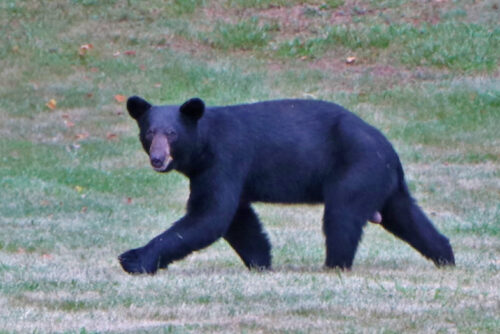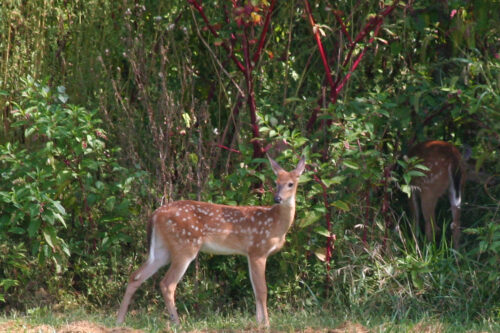Succession refers to the progression of vegetation types and plant communities after a disturbance. This usually begins with herbaceous plants, then small shrubs and bushes, and eventually becomes a mature forest. Providing a mixture of successional stages in a forest is key to ensuring a variety of wildlife species. Total tree harvesting methods can be useful in encouraging early regeneration plants to grow, while thinning and crop tree release can allow for an increase in mast production in mature trees. Wildlife, such as grouse, quail, squirrel, and turkey, may benefit from such management.
If trees fail to produce acorns, or disturbances related to diseases and pests occur in the forest, managing species diversity within the forest and herbaceous plant community can help ensure food security for wildlife. For example, certain oak species may not bear acorns every year, so a variety of oak species should be maintained in addition to other species that produce mast, such as hickory, dogwood, and red cedar.
It is also important to note that streamside management zones (SMZs), undisturbed buffer strips, should be established along stream banks to help preserve water quality for fish, aquatic life, and waterfowl. Buffer zones should be created within 50 feet of a stream, and no more than 50% of the timber volume should be removed.



Additional Resources
| Image | Title | ID | Description | Content Type | View | hf:tax:document-category | hf:tax:Media |
|---|---|---|---|---|---|---|---|
 | Brush Piles for Wildlife | P00201 | Brochure educates landowners about an excellent alternative to burning brush on his or her property, including where to build a brush pile, building a brush pile, and maintenance. Printed copies available. | Publication | View | fire-and-emergency-response forest-management | publication |
| Landowner’s Guide to Wildlife Abundance Through Forestry | 420-138 | Virginia Cooperative Extension publication provides in-depth information about forestry practices for wildlife. | Publication | View | forest-management | publication | |
| Tree Seedling and Understory Plant Presence in Deer Exclosures on the Matthews State Forest | CNRE-138NP | The purpose of this case study was to determine the impact of deer on the composition of the herbaceous and regeneration layer in two stands in the Matthews State Forest. This report summarizes the findings of this case study. | Publication | View | forest-management nurseries research-resource-information state-forests resource-information | publication | |
 | Virginia Forest Stewardship Plan: Appendix | P00212 | Appendix provides an excellent supplement to an individual landowner’s Forest Stewardship Plan. Subjects include land ownership, forest management, forest products marketing, water quality, forest health, fire, forests and wildlife, forest recreation, forest conservation, natural heritage and historic resources, taxes and financial assistance, forest stewardship program and certification, glossary, and contacts. Printed copies available with DOF Stewardship Plan development services only. | Publication | View | forest-management | publication |
 | Wildlife and Your Forest | P00207 | Brochure provides an overview of the critical relationship between forests and wildlife, the habitat required, and forest projects that benefit wildlife. | Publication | View | forest-management | publication |
